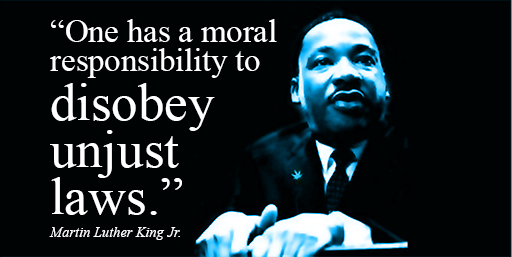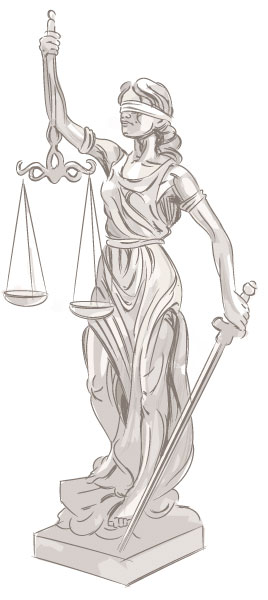4 Law and justice
Interconnected with the ideas of law and morality is the notion of justice. Achieving justice is often regarded as the main aim or function of the law – it is the ideal or the ultimate goal towards which the law should strive.
The following activity asks you to think about the meaning of justice.
Activity 4 What is justice?
Take a few minutes to think about what the word ‘justice’ means to you and write some notes in the box provided.
Comment
If you looked up the word ‘just’ in a dictionary you would find it defined along the lines of fairness or impartiality in action or judgement, conforming to high moral standards – honest, legally valid, unbiased, reasonable and rightful. This is not an exhaustive list and your definitions will vary.
At its most basic level, justice refers to a situation where there is fairness in the way the situation is handled and in the result. In everyday life we expect parents, teachers, employers and referees of sporting activities to be fair in their handling of their children, students, employees and players. In the same way, we expect law to be fair and just in its principles and in the way in which it is applied.
Images of justice can typically be found outside or inside court buildings. They take different forms but have common features. Most commonly these are a set of scales and a sword. Some images may also show a blindfold (such as Figure 7). The scales, sword and blindfold represent the image of justice.
The Scales of Justice represent the balance of the individual against the needs of society and a fair balance between interests of one individual and those of another. The personification of justice balancing the scales dates back to the Egyptian goddess of justice, Maat, who stood for truth and fairness. The Greek goddess of justice, Themis, was traditionally represented carrying scales in which she measured the different aspects of the argument.
The Sword of Justice represents a symbol of power, protection, authority, vigilance and might. The sword is double-edged, symbolising the power of justice, which may be wielded either for or against any party. It also serves as a reminder of the link between law and punishment. If the law is broken, then punishment will follow. At the time of development of this imagery penalties such as hanging, burning at the stake, transportation and hard labour all existed. The law still has the power to determine life or death. In recent years there have been a number of cases where families, medical staff and individuals have gone to court to seek a ruling to confirm that a decision they wish to take is a legal one. These decisions would result in life or death. Examples that have been referred to the courts include:
- the separation of conjoined twins, with lethal consequences certain for at least one of them
- whether life support should be maintained
- whether a life-support machine should be switched off
- whether individuals have a right to choose to die
- assisted suicide.
The blindfold, a symbol of blind justice, represents equality. Justice sees no difference between the parties involved. This symbol of justice is most commonly found in European images of justice.
Images of justice are usually portrayed as female and wearing Greek or Roman costume. This reflects the origins of the symbolism which emerged when women (and men) had very different roles in society. These images have an impact on perceptions of justice, and although these perceptions have altered over the centuries, in a modern world of equality these symbols continue to represent justice.
The meaning of justice has been considered over the centuries by successive philosophers, academics and lawyers, and there are many different theories. These would take a whole course in themselves, so here you consider two aspects, substantive justice and formal justice.


